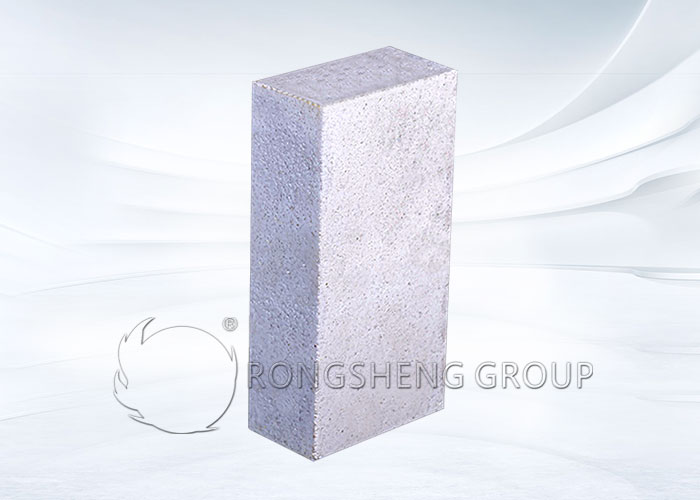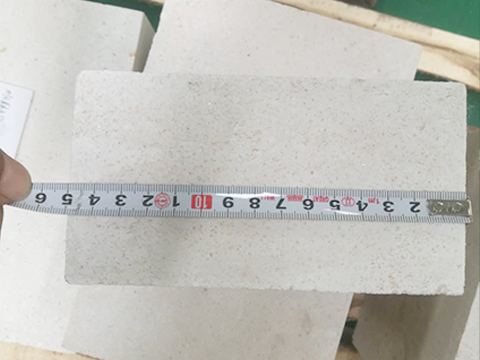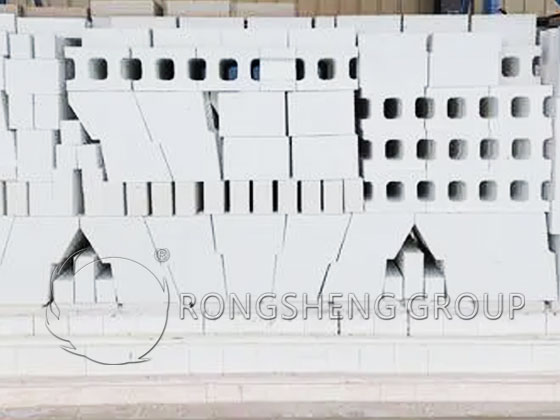At present, corundum mullite bricks are one of the main products of blast furnace ceramic cups. Corundum-mullite bricks have some drawbacks in terms of performance. The main manifestation is that the product has serious missing edges and corners during the grinding and masonry process, which affects the masonry quality of the product. Corundum mullite bricks are only qualified when the quality qualification rate of corundum mullite bricks is guaranteed to increase by 2%. Rongsheng refractory material manufacturer‘s strict quality of corundum mullite bricks acceptance has won the recognition of customers. And promoting the sales of our refractory products to more than 100 countries around the world.

Analysis of the Causes of Missing Edges and Corners of Corundum Mullite Bricks During Grinding and Laying Process
Corundum mullite bricks have serious missing edges and corners during the grinding and laying process. Rongsheng Refractory Materials Manufacturer analyzes the reasons and summarizes them as follows.
- Hardness. Hardness is generally considered an important indicator of a material’s wear resistance. The harder the material, the better its wear resistance, but in the case of large impact wear, the impact of hardness is not necessarily very large. Refractory bricks are heterogeneous and the hardness of each part may be different. For refractory bricks containing corundum and silicon carbide, if the bonding strength is sufficient, these high-hardness materials can still resist the wear of the refractory bricks after the low-hardness and easy-to-wear materials wear away.
- Crystal structure and crystal solubility. Materials with a specific crystal structure have better wear resistance. For example, cobalt with a close-packed hexagonal structure has a small friction coefficient and is wear-resistant. Metallurgically speaking, metals with poor mutual solubility also have good wear resistance.
- Strength. Refractory bricks will encounter a lot of impact wear during use. Therefore, high-strength refractory bricks have strong wear resistance.
- Volume density. Refractory bricks with high volume density and low apparent porosity have strong wear resistance.
- Temperature. Temperature affects the hardness, solubility and reactivity of materials, thus indirectly affecting the wear resistance of refractory bricks. Generally, as the temperature increases, the solubility and reactivity increase. Refractory bricks are used at high temperatures, and their wear resistance at high temperatures is very important.
- Atmosphere. Similar to the effect of temperature, the atmosphere affects the mutual solubility and reactivity between materials, thereby affecting their wear resistance.

Technical key and project implementation content to improve the performance of corundum-mullite bricks
The product formula system is modified in a targeted manner based on the above factors. In the production process of this product, the density of the bricks is increased through reasonable particle gradation and the selection and use of high-quality aggregates. Optimize and increase the firing temperature to improve the physical and chemical properties and wear resistance of the product. Ensure the quality of the later grinding and masonry processing of the product, thereby ensuring the improvement of the quality of the pre-masonry of the product.
1) Use high-quality raw materials. Better quality alumina grade raw materials and brown corundum raw materials are used as aggregates. It ensures the high hardness of the material and increases the toughness of the refractory material without increasing the cost.
2) Increase the proportion of brown corundum fine powder and alumina fine powder in the matrix fine powder. Reduce the porosity of the product after firing and increase the density of the product.
3) Change the traditional product stacking method and add air inlets for kiln car stacking to make the firing temperature more uniform.
4) Increase the product sintering temperature so that the product is fully sintered and the internal materials are fully integrated and mutually soluble.
Implementation plan to improve the performance of corundum mullite bricks
⑴ Combined with the performance requirements of the product, select raw materials with higher density and hardness. It was finally decided to use a raw material combination of brown corundum and bauxite. Brown corundum acts as a skeleton in terms of hardness, providing high strength to the product. Bauxite is slightly inferior to brown corundum in terms of hardness, but it is tough and can wrap brown corundum at a slightly lower firing temperature. Use together to meet product performance and economic indicators.
⑵ Combined with the original formula structure, a small amount of bauxite is combined with brown corundum and then supplemented with mullite raw materials and alumina powder. The bricks are formed using high pressure to increase the density of the bricks and form a highly polymerized body. Change the traditional kiln coding method, increase the hand seam width, improve the temperature homogenization performance of the kiln car, and determine the appropriate firing temperature. The product can achieve the effect of mutual dissolution of raw materials, tight combination, and tiny pores inside the product.

Technical summary
In the first stage, the raw materials entering the factory are optimized. After inspecting various brown corundum raw materials and bauxite raw materials, and after research and discussion by the project team’s technical staff, it was finally decided to use Dengfeng’s brown corundum and Shanxi bauxite.
In the second stage, the formula ratio of the corundum-mullite product was further optimized, and the stacking method and firing temperature were determined through multiple experiments. The principle of close particle packing is used to adjust the proportion of aggregate and powder. At the same time, the ratio of brown corundum particles and alumina particles is adjusted in various proportions. It was finally decided to use a ratio of 2:1 to achieve a tight packing effect and also play a role in wrapping and soluble in each other. In the matrix fine powder, 2a% of alumina powder is added to increase the aluminum content and at the same time reduce pores. A 630-ton press is used for heavy-duty molding to increase the density of the bricks from 3.1 to 3.15. Relax the hand seams of kiln bricks and increase the width by 5mm. The kiln car fire channel is added to increase the firing temperature of the product by 40°C, so that the product is fully melted and the internal structure is dense.
In the third stage, multi-batch deployment plans are trial-produced, and a stable production plan is finally obtained.
Improved Performance of Corundum Mullite Bricks
Corundum mullite bricks use brown corundum combined with bauxite to enhance the wear resistance of the product. However, it has a certain impact on the high-temperature load softening temperature of the product, and the proportion of alumina is not easy to increase.
The amount of aluminum oxide powder added is controlled at 2a%, which is sufficient. Excessive alumina powder affects the firing temperature and also reduces the brick density.
In the matrix fine powder, it is advisable to reduce the addition of bauxite raw materials. The addition ratio can be reduced to 1a% to enhance the hardness of the matrix.
Rongsheng Refractory Materials Manufacturer is a powerful manufacturer of refractory materials production and sales. Our corundum mullite brick products have stable and reliable performance. Strict factory inspection. It extends the service life of the refractory lining of the customer’s industrial furnace and ensures the economic benefits of the customer’s production. Contact us to get free samples and quotes.

